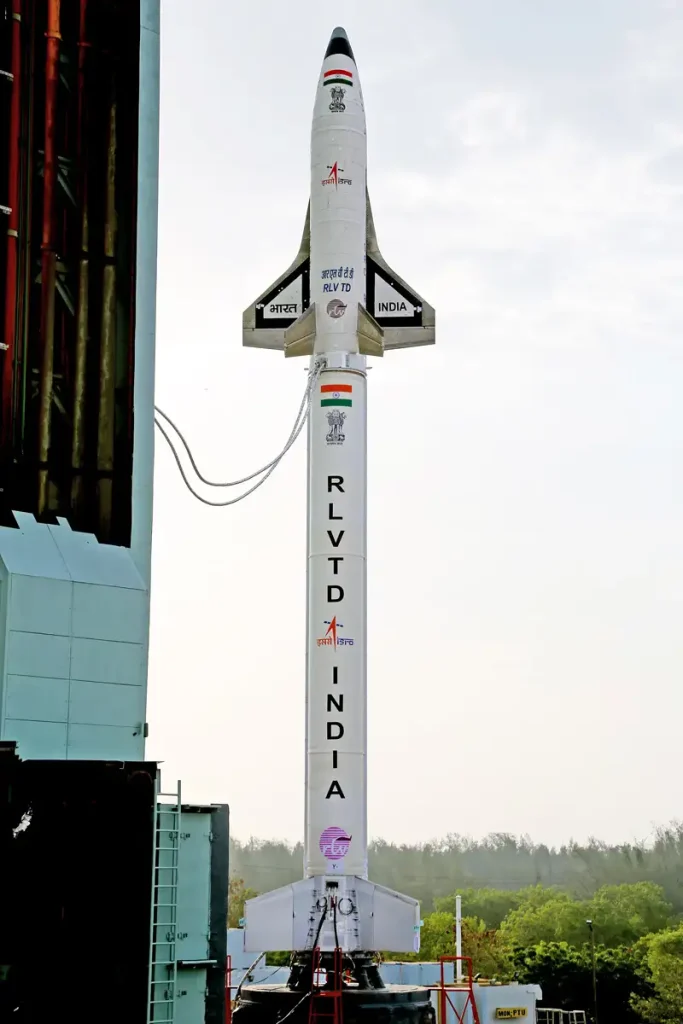Sreedhara Somanath, the head of the Indian Space Research Organisation (ISRO), said on Monday that India intends to design and manufacture a new reusable rocket for the world market. This will make it much cheaper to put satellites into orbit worldwide.
Speaking at the seventh Bengaluru Space Expo 2022, Somanath said it costs between $10,000 and $15,000 to send a payload of one kilogramme (2.2 pounds) into orbit. He said that New Delhi wants to bring the price down to $5,000 or even $1,000 per kilogramme, and the only way to do that is to make rockets that can be used more than once.
The official said a rocket must be competitive, cheap, and easy to make. Somanath says that India should make it in the next few years so that the government can decommission all active launchers in the country at the right time.
At the moment, India’s operational launch vehicles are expendable, which are made to be used only once and don’t have their stages brought back to be used again. Usually, the launch vehicle is made up of several rocket stages. During different parts of the mission, the stages are thrown away one by one as the launch vehicle climbs to the right height and speed.
ISRO Reusable Launch Vehicle
In May, Somanath posted on ISRO’s Twitter page that ISRO was planning to test an Indian-made Reusable Launch Vehicle (RLV) reusable launch vehicle soon.
Weather permitting, the reusable launch vehicle will soon fly over Science City in Challaker, Karnataka, Somanath tweeted.
In 2019, ISRO announced that it intends to eventually return the first and second stages of space rockets so that they can be reused. This will reduce the cost of space launches and launch a heavier payload into space.
RLV-TD first test
On May 23, 2016, the RLV-TD (Reusable Launch Vehicle-Technology Demonstrator) was launched as a test by the Indian Space Agency.
The test launch has three objectives. The first one was to test the characterization of the aero-thermo dynamics of hypersonic flights. The second was to test the autonomous mission management of hypersonic vehicles. And the third was to test the necessary re-entry technology for the vehicles.
At 7 a.m., a booster rocket took off from the spaceport at Sriharikota, about 100 km from Chennai. A solid rocket HS9 carried a winged-body aerospace vehicle (RLV-TD). Before HS9 burned out, it went up for about 90 seconds. An ISRO release said that RLV-TD climbed to a height of 65 km after it was separated from the booster at 56 km. From an altitude of 65 km, the vehicle returned to the earth’s atmosphere at Mach 5. With the help of its TPS (Thermal Protection System), RLV-TD could survive the high temperatures of re-entry. Ground stations at Sriharikota and a terminal on a ship were able to follow the vehicle as it flew. Its navigation, guidance, and control system guided it to a safe landing spot in the Bay of Bengal, 450 km from Sriharikota. About 12.8 minutes passed during the whole flight.

During this experiment, the RLV-TD was not meant to float and would probably break up when it hit the water. But K. Sivan, the then director of the Vikram Sarabhai Space Centre, Thiruvananthapuram, is quoted saying that the landing was gentle and that the vehicle was not damaged in any way. He said that the next test would be to fully get the RLV-TD back and land it on a 5-km runway that will be built at SHAR in Sriharikota.
RLV-TD has a body or fuselage, a nose cap, two sets of delta wings, and two sets of vertical tails. It also has active control surfaces, Elevons and Rudder, placed symmetrically. Choosing materials like special alloys, composites, and insulation materials for an RLV-TD and making its parts is a highly complex process that requires people with a lot of skill. This vehicle was created with the help of a lot of high-tech tools and testing equipment. The development of a 6.5-meter rocket took five years and 14 million dollars.
The final version of the rocket will be about 40 meters long and will be able to carry Indian astronauts. It was forecasted to take at least 10-15 years to get ready, which means the RLV could be operational by around 2030.
To save the rocket’s first stage, ISRO plans to follow the SpaceX methodology and land it on a pad in the ocean. To reuse the second stage, the Indian Space Agency had planned to test an improved version of the RLV in 2019.
Plans
In 2021, the then ISRO Chairman Kailasawadivu Sivan spoke about the plans for the 2020s, emphasizing the importance that research and development will play in the next ten years. He noted that the space sector is undergoing a revolution due to the emergence of many private players who intend to create cost-effective transportation systems and provide services for delivering goods into orbit.
According to global trends, India needs to develop a heavy launch vehicle, a rocket engine, a reusable rocket, an advanced propulsion system, a new generation of aerospace electronics, advanced materials, dynamic space programs, and the effective integration of space services, as well as advanced science missions, he said.

Take 50 years, it will still be in development phase.